Friday 26th November 2021
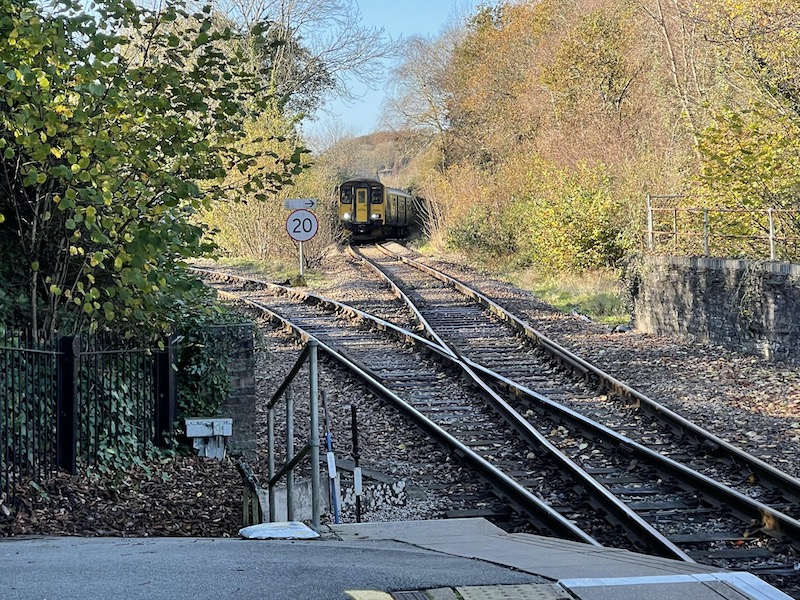
As explained in Wednesday’s blog when the violent storm caused the railway track at Dawlish to collapse in 2014 there was much talk at the highest political level (Prime Minister David Cameron no less) about taking action to ensure the South West wasn’t ever cut off from the rail network again.
One option given serious consideration was the idea of restoring the former London and South Western Railway line via Okehampton, Tavistock and Bere Alston which closed in 1968.
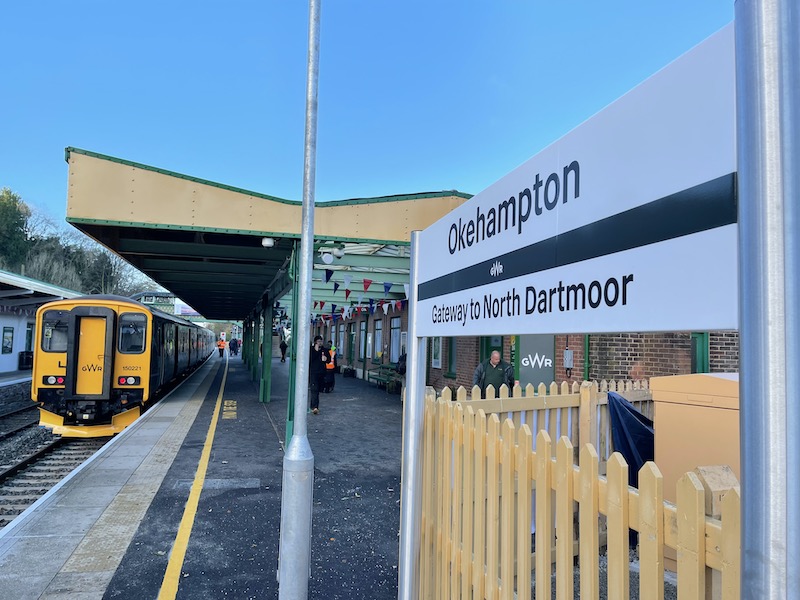
In fact the DfT have recently announced £50,000 funding from its “Restoring your Railway” fund for further work on what’s seen as the next phase after Exeter to Okehampton – reinstating the line between Tavistock and Bere Alston where it meets the existing Tamar Valley Line into Plymouth.
Reopening this section has been talked about for a very long time. It first got a mention in the 2004 Devon Structure Plan as well as the 2011 West Devon Core Strategy.

Reinstating the entire line including between Tavistock and Okehampton is fraught with difficulties not least because key sections of the former track bed near Tavistock have been built over, other sections are now a popular cycleway and long stretches of single track railway wouldn’t make for a practical alternative route if the intensively used twin track line through Dawlish was unavailable.
And that’s before consideration of whether there are sufficient passengers along the route to justify what would be a huge investment making the £40 million bill for reopening the Exeter to Okehampton stretch look like petty cash.
After my early morning train journey to Okehampton on Monday I took a ride round the circuit to Plymouth to get a feel for the likely demand as opposed to the ‘wouldn’t it be nice to have’ approach. Obviously that meant a bus ride or two, in the absence of the railway.

The Dartline bus company in conjunction with Devon County Council commendably increased the timetable of route 118 which runs between Okehampton and Tavistock to coincide with the reopening of the railway last weekend.

The new timetable sees buses provide excellent connections with train arrivals and departures with the route modified to pick up and set down at the bus stop right outside the station.
There was a newly posted timetable in the case too and a bus was waiting outside both for the 07:20 and 09:24 train departures (07:07 and 09:17 arrivals from Exeter).

I was also impressed by a printed bus timetable with information about the connections was available in the timetable leaflet display at Exeter St Davids.

This is an excellent development all the more so as it’s so unusual these days – not that it should be of course.

The leaflet gives the excellent news of a ticket tie up (of sorts) between train and bus in that “a maximum fare of £3.00 single or return is being introduced for passengers on the 118 who have a valid rail ticket”. Great for passengers transferring from train to bus, but not so good for those starting their journey on the bus, but at least it’s a start.
As is the even better news of the introduction of a Sunday and Bank Holiday service from the December timetable change on 12th December including one journey continuing through to Gunnislake making for a reinstatement of the circular journey previously available using the erstwhile route 279. Although as Stevie commented on Wednesday it’s quicker to take Stagecoach’s route 1 from Tavistock to Plymouth so the Gunnislake extension is really just playing timetables.
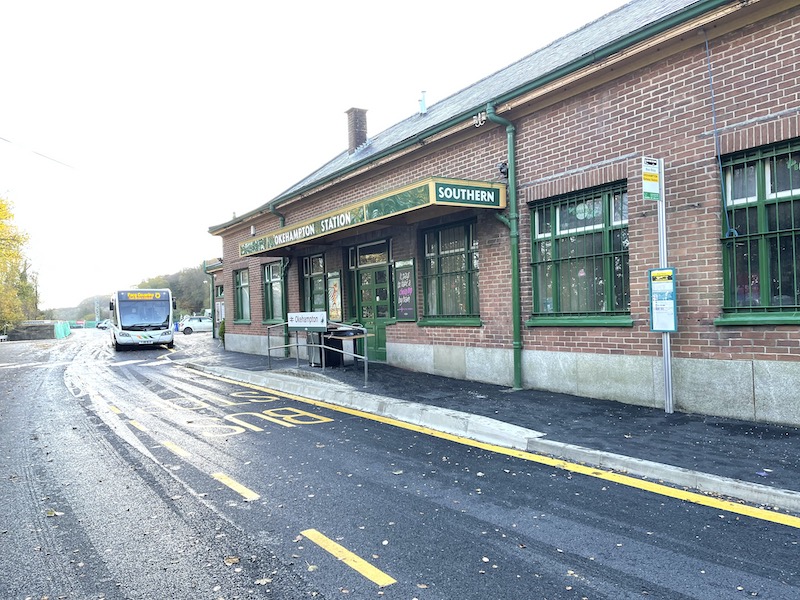
GWR has also produced another colourful leaflet of their own showing bus and train timetables combined. It really is a much welcome development to see printed leaflets actually promoting bus and train integration.


My Exeter to Plymouth, avoiding Dawlish, journey began on the 08:38 GWR train from Exeter St Davids to Okehampton on Monday morning with 15 passengers and four bicycles on board. Not bad for a first weekday morning after a fifty year absence.
I became a bit concerned whether my connections would quickly fall apart when we came to a halt for seven minutes on our way out of Exeter. It turned out we had to wait for a late running train from Barnstaple to clear the single track south of Crediton. Luckily there’s a 13 minute connection between train and bus in Okehampton.

In the event we made it to Okehampton by 09:23 and the bus was obviously still waiting for its departure at 09:30. Interestingly I also noted the same train arrived late into Okehampton at 09:23 on Tuesday morning too. This doesn’t want to become a habit if passengers are going to be encouraged to make connections.

In fact the bus didn’t leave until nearly 09:35 on Monday and it was good to get out of the cold and on to the bus when the driver eventually pulled forward.
As you can see one other passenger also made the connection from train to bus, having boarded the train in Exeter for a first time ride. He bought a Devon day ticket on the bus for £9.60 which would give him unlimited travel on all Devon’s buses.
Although I was using my concessionary pass I asked the driver about the £3 special ticket deal showing my rail ticket but he explained that arrangement hasn’t been set up yet and he thought it would only apply from 12th December.
We headed down into Okehampton’s town centre and picked up four passengers waiting at the West Street bus stop then it was off to Tavistock via Lydford, passing the second bus on the schedule.

The bus pretty much follows the alignment of the former rail line alongside the A380 and through the village of Lydford itself where we picked up one more passenger. There used to be a station here which closed in 1968, as well as a branch coming in from Launceston which closed in 1966.

It’s a lovely ride skirting the edge of the National Park offering some excellent views, as I’m sure the train used to do.


The bus also passes through the hamlet of North Brentor and then back to the A386 through Mary Tavy before arriving into Tavistock where the old track bed has disappeared under new development.
As already mentioned, Tavistock is connected with Plymouth by Stagecoach’s route 1 running every 15 minutes and taking about an hour for the journey. Any restoration of a train service could never attain such a frequency and the journey time wouldn’t be much less especially if the winding track was reinstated along the original railway course to Bere Alston which follows the meandering River Tavy for part of the way.
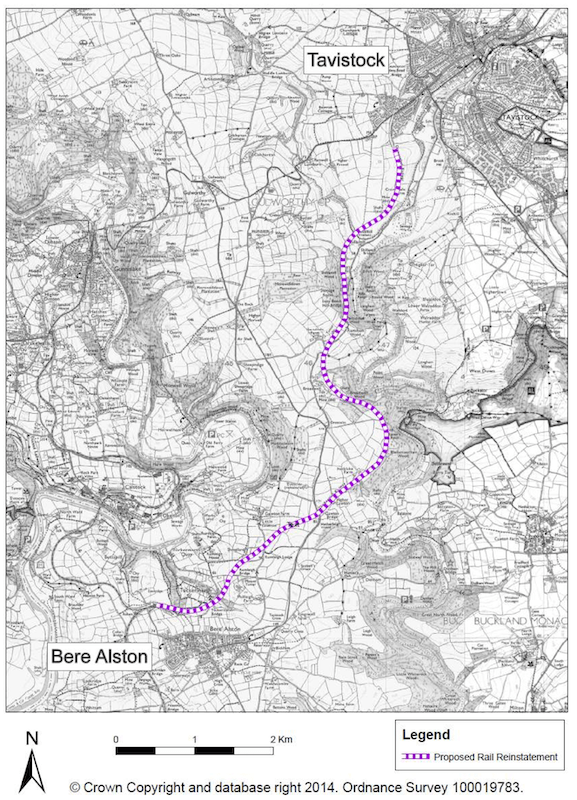
Stagecoach also runs tendered bus route 87 between Tavistock and Bere Alston. It’s an approximate hourly service and passenger numbers seem to be very low.
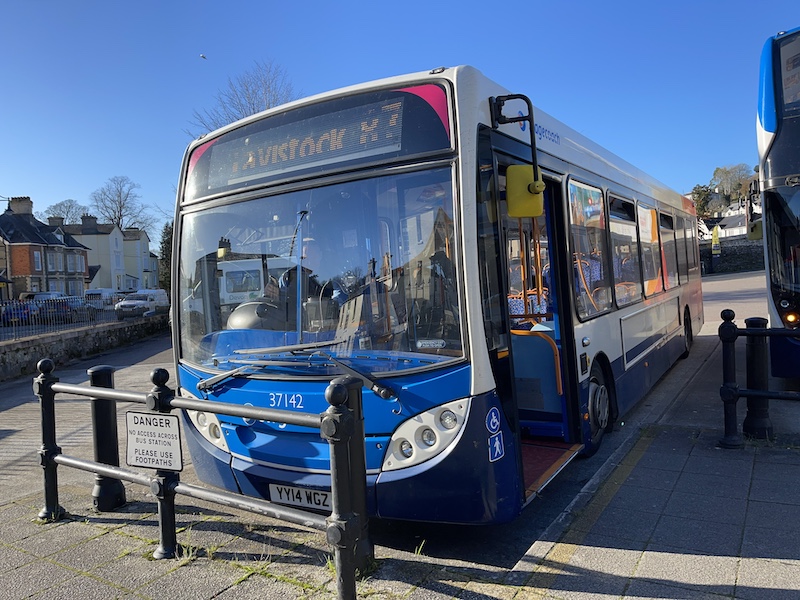
I caught the 10:50 departure from Tavistock bus station with two other passengers, one of whom was on board for just a couple of bus stops as we left Tavistock on the A390 towards Gunnislake and the other stayed on a bit longer before alighting at a track to a farmhouse.
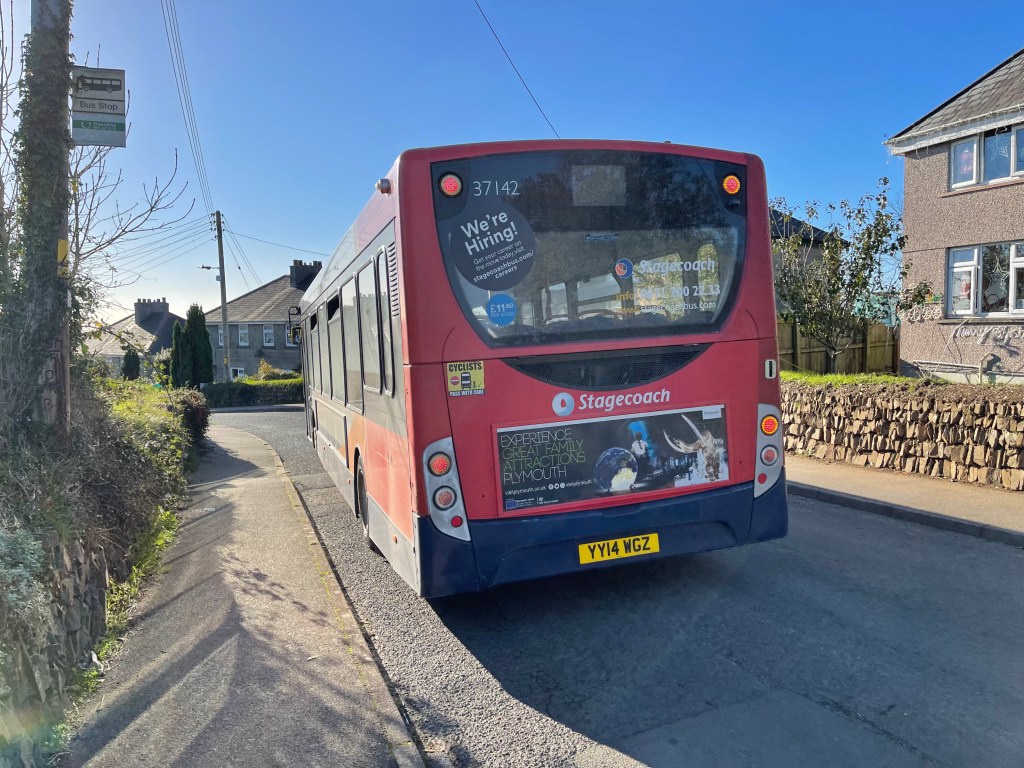
We continued on the B3257 which ends in Bere Alston and I alighted in the village and walked the quarter of a mile downhill through the village and on to the station.


It’s a lovely walk.
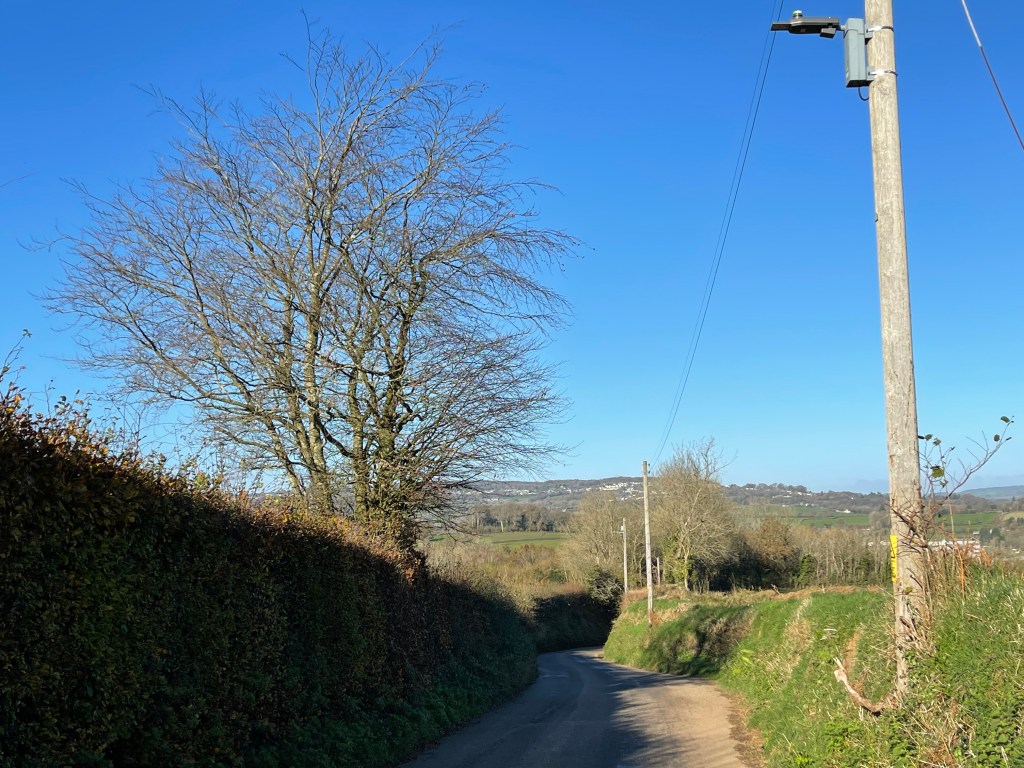

With some great views.
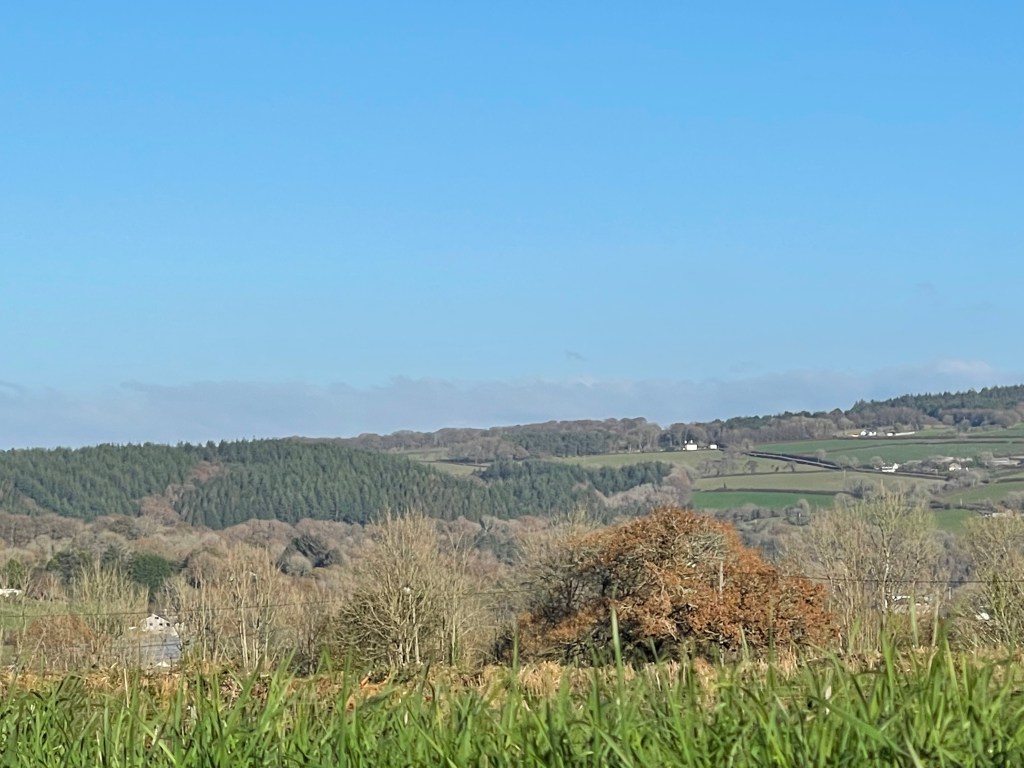
Bere Alston station is where the line from Tavistock was joined by the short branch continuing up to Gunnislake which still runs.
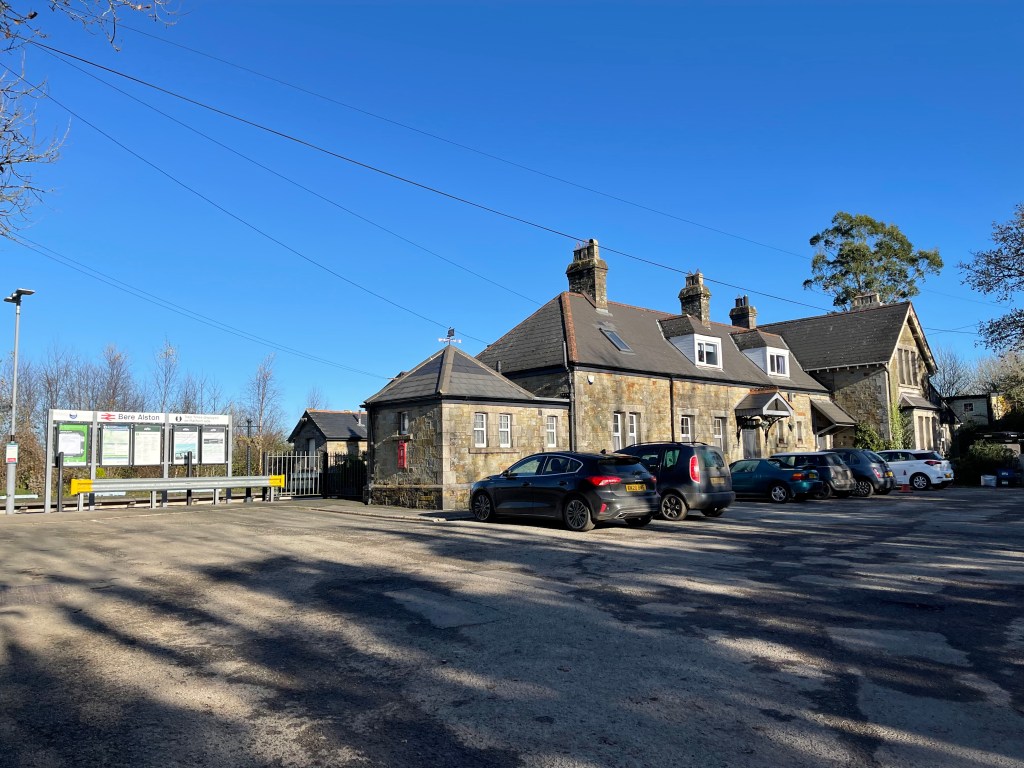
The station is a lovely remote rural former junction station with signal box still in place and disused platform.

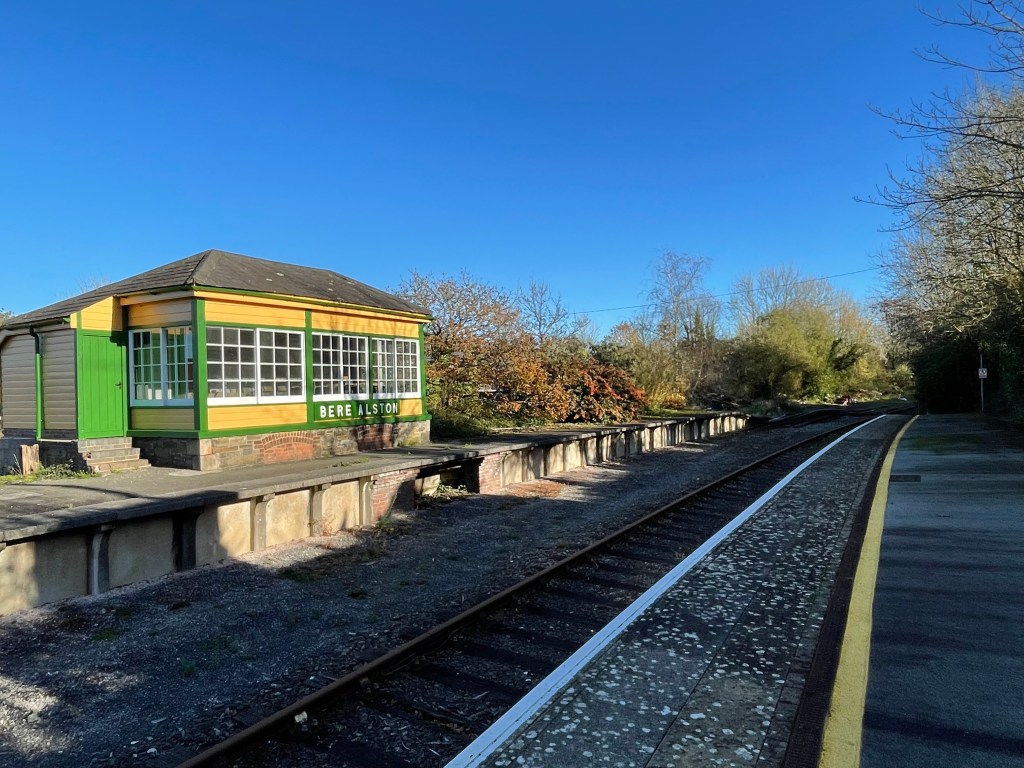

Trains now forward into the station then reverse back out from the dead head end where the track once continued to Tavistock having arrived from either Gunnislake or Plymouth.

The 11:37 to Plymouth had about a dozen passengers from Gunnislake on board when it arrived and four of us boarded and enjoyed the lovely views across the River Tamar including the Royal Albert Bridge taking the main line into Cornwall as we made our way down to Plymouth.
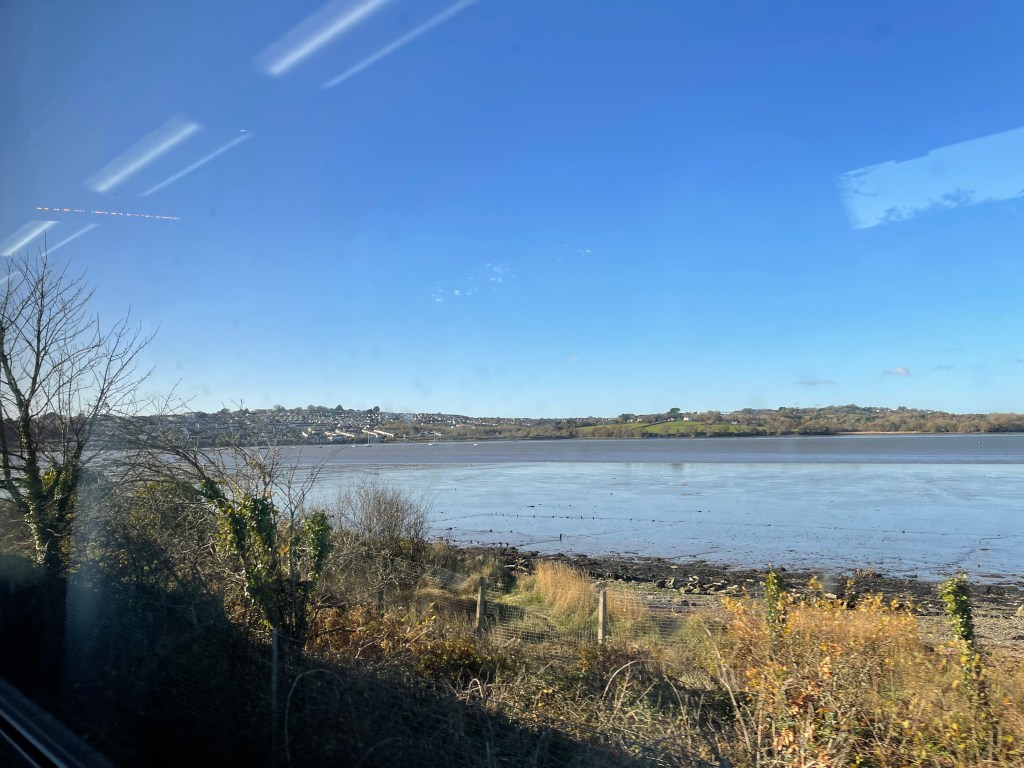

I arrived into Plymouth at 12:01, 3 hours and 23 minutes after leaving Exeter St Davids. Obviously that time could be improved by a through train on a restored track all the way – maybe around a couple of hours – but would enough people use it?
With Tavistock well served by Stagecoach buses to Plymouth, the small community in Lydford now well served by an improved bus route 118, Bere Alston connected to Tavistock by bus route 87 with a fairly generous frequency for the numbers travelling and to Plymouth by the Tamar Valley Line, I can’t see any justification for restoring this Beeching cut.
A “Restoring Your Railway” too far. And I’m not charging £50,000 for this advice.

Roger French
Next blog: Sunday 28th November 2021.


Good to know that some effort is being made to promote integration; lovely photos – what wonderful weather you had!
LikeLike
The road from Okehampton to Tavistock is the A386.and the branch to Gunnislake once continued to Callington Station which was actually in Kelly Bray. I am eagerly waiting for the full service to begin so I can try this trip out.
The thing that ponders myself is why the 118 now does not go to Bridestowe as it formally did and there was also a station there.
LikeLike
Thanks Colin; A386 updated.
LikeLike
Presumably the 4 buses a day that serve Bridestowe on the 6A are considered adequate for a small village, and diverting the 118 would add quite a bit of time to the journey which could discourage ridership and might make it difficult to run the hourly service reliably and meet trains at Okehampton. It doesn’t look like there would be major demand for travel from Bridestowe to Lydford or Tavistock!
LikeLike
Also the station at Bridestowe was two miles from the village it purported to serve. The 118 bus may not serve Bidestowe village – but it does pass close to its former station! The station was used by nearby Dartmoor mining industries and a local peat works, and also for the transport of rabbits when warrening was a major activity in the area.
LikeLiked by 1 person
Looks like everything has been done right, including a bus stop right outside the station and a connection robust enough to cope with shortish delays. And what a lovely way to spend a Monday morning!
With the line reopening coming in under budget, it would be great if a little bit of the leftover funds could be used to provide a bus shelter or an extended canopy at Okehampton Station.
LikeLiked by 2 people
The need to by-pass Dawlish is diminishing, given the extensive remedial work that is now taking place on that stretch of line (which unfortunately is removing much of its charm, but needs must). Any case for restoring Okehampton to Bere Alston must now be based on the potential for local journeys and tourism into Dartmoor, although having an alternative route to send the Night Riviera and occasional winter weekend services round so engineering work can take place on the main line would be a useful by-product.
LikeLiked by 2 people
The counter argument for reopening here:
https://northernrouteworkinggroup.wordpress.com/
Some sensible people involved. Notable that they make the case for demand on the wider catchment area rather than just line of route. Have to say I personally think it unlikely to happen as there’s a reasonable queue of projects with a much better BCR.
LikeLike
I’m always amused by the rationale of those wanting to reopen the former route to Plymouth/Cornwall via Okehampton as a Dawlish backup diversion. The primary reason given is to protect main line services. However, the REAL weak link is to be found at Cowley Bridge, north of Exter St. Davids. This part of the track floods regularly, killing off services to/from the north, and ironically the Okehampton and Barnstaple branches. Network Rail has done work to protect the signalling electronics, but the line clearly needs raising above the water meadows. This would be very expensive indeed, but nothing like the cost of reopening the entire former Southern line to Plymouth. Meanwhile, Dawlish (we are assured) has soaked up millions and is good for the foreseeable future (assuming the latest rolling stock withstands the spray). A bit of refocusing is needed.
This BBC report illustrates the issue https://www.bbc.co.uk/news/uk-england-devon-23520673
LikeLiked by 2 people
Should/will the line reopen? Yes and no.
I can’t see any case top reopen the route from Okehampton through to Plymouth as an alternative to the Dawlish route.
– It doesn’t make sense for regular services, as it is longer than the coastal route and so would be slower, and for trains from London would require a reversal at Exeter and then another at Plymouth if it continued to Penzance. The main line is double track and so I can’t see that there are any significant capacity constraints between Exeter and Plymouth that are limiting the service on that section.
– If the plan was to abandon the Dawlish route because of the difficulty of defending it against the sea, that would cut off the whole of Torbay and surrounding areas from the rail network (total population well over 200k) with their nearest station in Exeter, which would be completely unacceptable.
– The business case for building a line primarily so that it can be used as an occasional diversionary route just doesn’t stack up. It’s a ridiculously expensive way to cover for an event that happens every few years at most.
Reopening this line has to stand on its own two feet, for worthwhile traffic to/from stations along the route, and it looks very unlikely that there will be any viable level of traffic between Okehampton and Tavistock to justify doing that, if up until last week demand was being met by an Optare Solo running every 1½ hours.
South of Tavistock may be a different matter. It’s much easier to rebuild, for a start. Although the Tamar Valley line at the moment is very slow, that seems to be because of the quality of the permanent way and so remedial works to allow higher speeds (and particularly to allow anything above a class 150 to go beyond 30mph) should allow a journey time from Tavistock to Plymouth of no more than 40 minutes, making it comfortably quicker than the bus. If the route can support a modern double-decker bus every 15 minutes then it certainly should be able to support a train service!
Dream scenario: reinstate the passing loop at Ernesettle and a second platform at Bere Alston, and use two trains to run an hourly service between Tavistock, Plymouth and Ivybridge, with a new station at Plympton. Intermediate stations on the Tamar Valley line may not all need an hourly service. The Bere Alston to Gunnislake branch could be run with something cheap like a Parry People Mover or Revolution VLR – which being super-light might allow it to go fast than the current jogging pace – and could connect with proper trains at Bere Alston. Probably not a solution that will appeal to the bean counters!
LikeLiked by 1 person
40M for this project is astounding! What cost for Tavistock – Bere Alston with one new station, significant changes to another, a substantial viaduct and tunnel and a track-bed not used for over 50 years?
LikeLike
Wonderful . Must add it to my list for 2022. Did it all in 1962 and Gunnislake recently but the rail/ bus though journey appeals. Thanks Roger
LikeLike
Sadly, rogerssuggestion that the cost against benefit may be unacceptable as the link onwards from Okehampton would need to rely heavily on local traffic which would not be there. Tavistock to Plymouth by rail could not compete with a 15 minute frequency by bus.
Is there any merit in pushing westwards from Okehampton to North Cornwall to relieve the A30? How much of the alignment between Heathfield and Exeter St. Thomas is still available to reinstate as an alternative emergency Dawlish bypass at probably lower cost?
LikeLike
A very balanced assessment of the pros/cons of restoring the railway between Okehampton, Tavistock and Bere Alston. Whilst being a ‘nice to have, it does look to be very much a non-starter.
What often gets overlooked in any discussion about the need to provide an alternative to the line along the Dawlish seafront, is the fact that there used to be a much shorter inland diversionary route which ran between Exeter and Newton Abbot via Chudleigh. In the grand scheme of things, this could possibly be a cheaper, albeit still costly, alternative?
LikeLiked by 2 people
There is no economic case for building a line purely to be used as a diversionary route when the sea gets over-excited. It needs to stand on its own two feet. Could it be used to permanently replace the Dawlish route? No. The inland route has been severed by the A30 and A38, but even if a route around that could be found, it was a poor alignment that would be painfully slow and would add too much to the journey time to be a plausible permanent solution.
LikeLike
The 118 timetable looks very inefficient with huge layovers at Tavistock. Some will no doubt be meal reliefs, but I can’t help feeling the spare time could be used for something local at minimal cost. Some residential areas get rather poor bus services, so an extra couple of trip a day could be worthwhile.
LikeLike
It is difficult to see any justification for reopening the line given the very high cost and no doubt it would go well over budget. Usage is likely to be low particularly s the stations tend to be a long way from the towns and village they are supposed to serve
Could modern trolley buses be used. There would be problems but would probably be solvable. There could use the old track bed where available and divert off of it where it is not and also to server the towns and villages. Where it goes off of the track bed it run on batteries
Clearly it would be of no use for diverting mainline trains. The old track bed is narrow but could be widened a bit and could be operated as single track with passing loops. Old style trolley buses picked up the live and return vi overhead lines this makes engaging and disengaging more difficult so better to have the return path via the track bed
How feasible the above is and what the cost would be who knows. It would be an interesting exercise though
In the overcrowded UK land is at s premium so build new lines tends to be very expensive. Sadly when the old lines were closed the track beds were not protected and most have been partially built over making it non viable to reopen most of them
LikeLike
Reopening the Okehampton line throughout must be reconsidered sensibly. With global heatwaves together with predicted sea level rises then even the new Dawlish sea wall may become inadequate for the job. Add in moving away from diesel fuel, and I am sure that a greener, cleaner railway would be best for everyone, maybe with battery/overhead electric power. I for one would certainly keep battery powered trains away from sea spray effects.
LikeLike